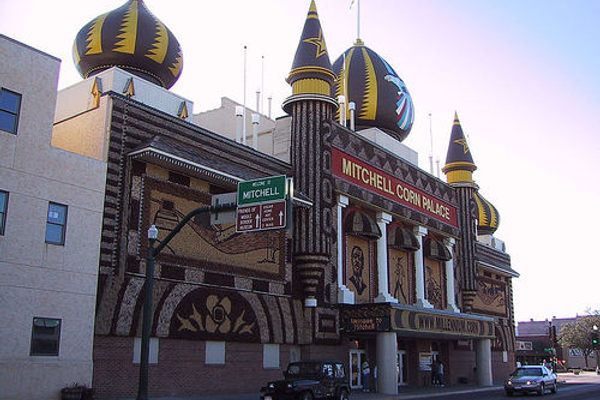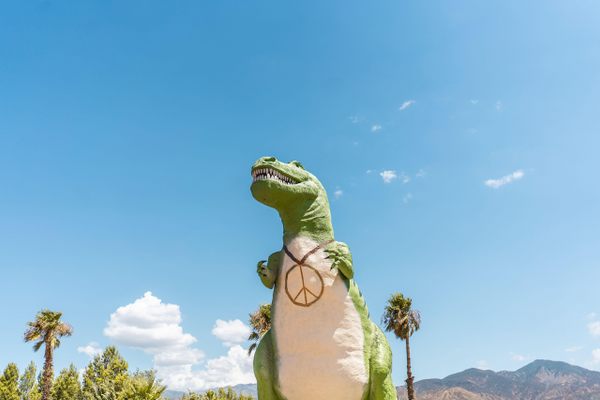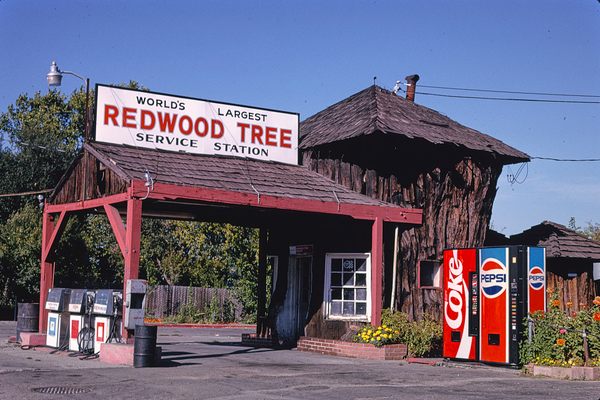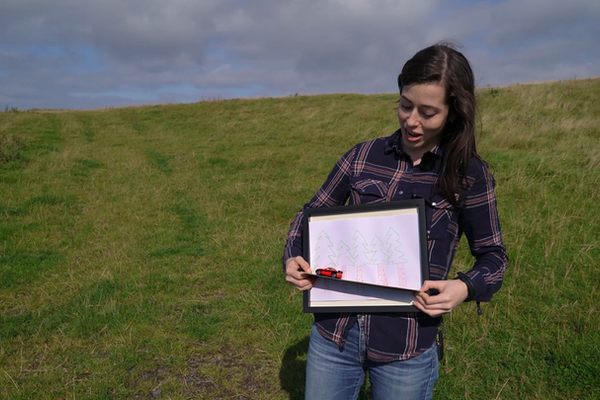
Revisiting a Classic Photo Compendium of Giant Roadside Curios
John Margolies played an outsize role in memorializing America’s outsize attractions.
American highways have something for everyone. Lots of litter. License plates galore. And, if you take the right route, a dinosaur car wash, or a supper club in the biggest fish you’ve ever seen.
John Margolies relished it all. The celebrated architecture critic and photographer developed an affinity for roadside attractions in childhood, when family trips kept his future fascinations a constant blur outside the window. “My parents’ generation thought it was the ugliest stuff in the world,” Margolies told The Washington Post in 2015.
In adulthood, Margolies hit the road to look for America—specifically, the America you find on the country’s blue highways, where a cornucopia of curios populate the roadsides. From the artistic to the garish—but most always the giant, the better to make an impression on those driving by—Margolies wanted to chronicle it all.

True to his architectural background, Margolies often chose subjects that were mimetic buildings—novelty structures built to resemble real-world items. That’s why roadside America is full of windowed teapots and drive-thru donut, among other architectural oddities.
“If they were tacky, I didn’t care,” he said. “Tacky isn’t necessarily better or worse than any other kind of taste, although many people would care to disagree with that.”
Since Margolies died, in 2016, his vast roadside portfolio became available to the public, and has yielded troves of indelible images—a sort of alternate American history, written on the country’s criss-crossing highways and interstates.
As with travel itself, roadside attractions are transient. In the years since Margolies snapped these shots, some sites have disappeared altogether. Others are still there, albeit sometimes in different form, vividly persuading drivers to pull over and make the jump from oglers to customers.
In that way, Margolies’s four decades of roadside photography are a time capsule of the kitschiest forms of American capitalism—a sales pitch that says, Look at this giant plaster squirrel named Pearl. Now, please buy some of our pecans.
Here, Atlas Obscura takes a look at some highlights from the Margolies photo archive, available through the Library of Congress.







Correction: This article previously stated that the giant buffalo is in Jameston, North Dakota. It is in Jamestown. It also stated stated that Mitchell’s Corn Palace is in North Dakota. It is in South Dakota.

























Follow us on Twitter to get the latest on the world's hidden wonders.
Like us on Facebook to get the latest on the world's hidden wonders.
Follow us on Twitter Like us on Facebook